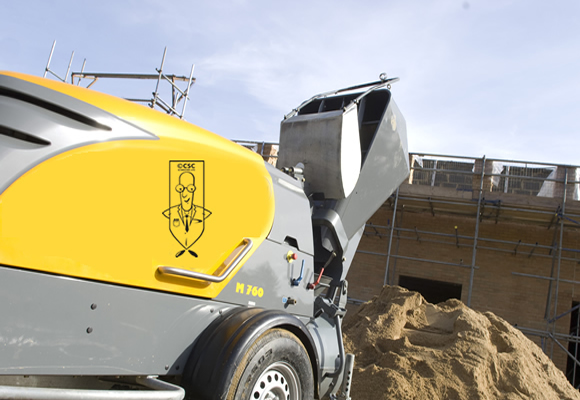 Aggregates are inert, granular materials which form a major component of screed and concrete mixes. With urban expansion and environmental constraints putting a strain on the naturally occurring aggregate sources such as sand, gravel and crushed rock, the construction industry is now widely exploring other sustainable and economically viable resources, to meet their ever-growing demand for consistent, high quality aggregates.
Aggregates are inert, granular materials which form a major component of screed and concrete mixes. With urban expansion and environmental constraints putting a strain on the naturally occurring aggregate sources such as sand, gravel and crushed rock, the construction industry is now widely exploring other sustainable and economically viable resources, to meet their ever-growing demand for consistent, high quality aggregates.
Recycled aggregates
Recycled aggregates are the aggregates derived from the industrial processing of inorganic construction and industrial wastes. Reclaimed construction material and demolition wastes are processed and graded to manufacture these alternate aggregates which can be used for various construction purposes ranging from road surfacing and pavement construction to concreting and screeding.
The reclaimed aggregates undergo stringent quality tests in lieu with the European Waste codes, to ensure the aggregates are inert, clean and fit for purpose as construction aggregates. Nearly 28 % of the UK’s construction aggregate requirement is currently met by recycled aggregates.
| Types of Recycled Aggregate | Use |
| Recycled Concrete Aggregate (RCA) | Aggregates that are derived from construction and demolition waste. RCA is used by ready mix concrete producers to make ‘green’ or ‘sustainable’ concrete, also known as Recycled Aggregate Concrete (RAC). RCA is used both as coarse and fine aggregate. |
| Recycled Concrete and Masonry (RCM) | Aggregates derived from concrete pavers and masonry blocks that are suitably graded. RCM is mainly used as road sub-base material for road pavements. |
| Glass Cullet | Cleaned, crushed and graded glass aggregates derived from waste glass bottles and reclaimed glass. It is used as a lightweight aggregate in screeds, and as a substitute for gravel or crushed rock in construction projects. Not suited for use in structural concrete. |
Non-construction sources such as scrap tyres and crumb rubber are also recycled to produce alternate aggregates for use in asphalt concrete.
Manufactured/ Reused By-product Aggregate
These are the aggregates manufactured from naturally occurring materials and by-products of industrial processes. The selected material are crushed, screened and graded to produce aggregates to suit the demands of concretes of varying strengths.
| Aggregate | Description and application |
| Iron Slag | Different grades of aggregate are derived from iron and steel manufacturing. Suitably graded iron slag aggregates are used in roof screeds, concrete blocks, road base, road sub-base and structural concrete. |
| Manufactured Sand | Sand that is manufactured from by crushing rock or other specified natural material. Used mainly for concrete and road construction, and as a major replacement for natural sand. |
Lightweight aggregates
These are the aggregates used mainly in the manufacture of low density concrete. They are mostly produced from materials such as fly ash (by-product of burnt coal), clay, slate or shale.
Lightweight aggregates are also being manufactured from organic sources such as rice husk, woodchips and sawdust.
Marine aggregates
As the name suggests, these are the aggregates derived by dredging the sea-bed. Marine aggregates currently meet nearly 20% of the sand and aggregate requirement in England and Wales.
Whilst marine aggregates provide an important source of superior quality aggregates, special care is required to eliminate chloride traces in the material. The presence of chlorides in the aggregate can cause corrosion of any embedded metal present in the screed or concrete and affect the rate at which the screed/concrete gains its strength.
Apart from the aggregates discussed above there are various other types of aggregates in the market today such as polystyrene aggregates, expanded clays and coal washery rejects which are mainly used only in lightweight concrete production.
With the UK requiring an estimated 200 Mt of aggregates every year, it is imperative to continue investing in the research for sustainable and economically viable alternatives to meet the incessant demand for high quality aggregates.







